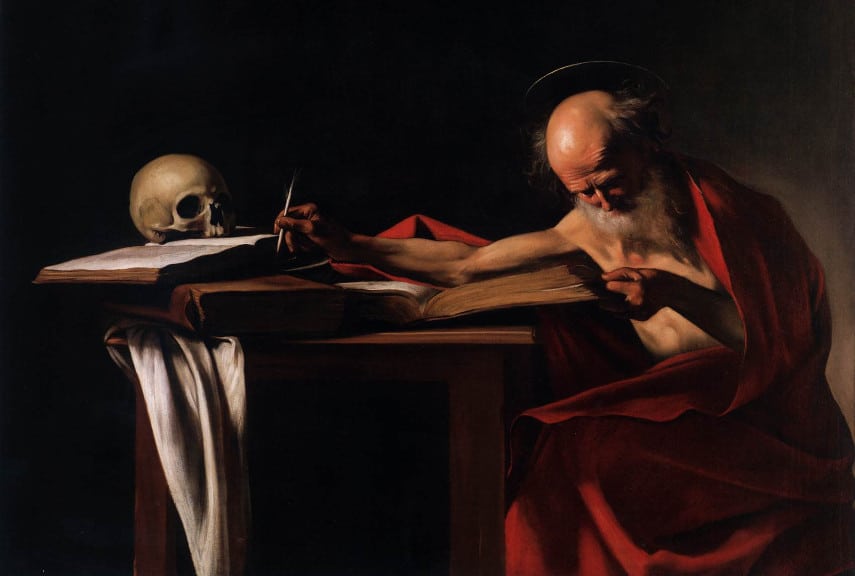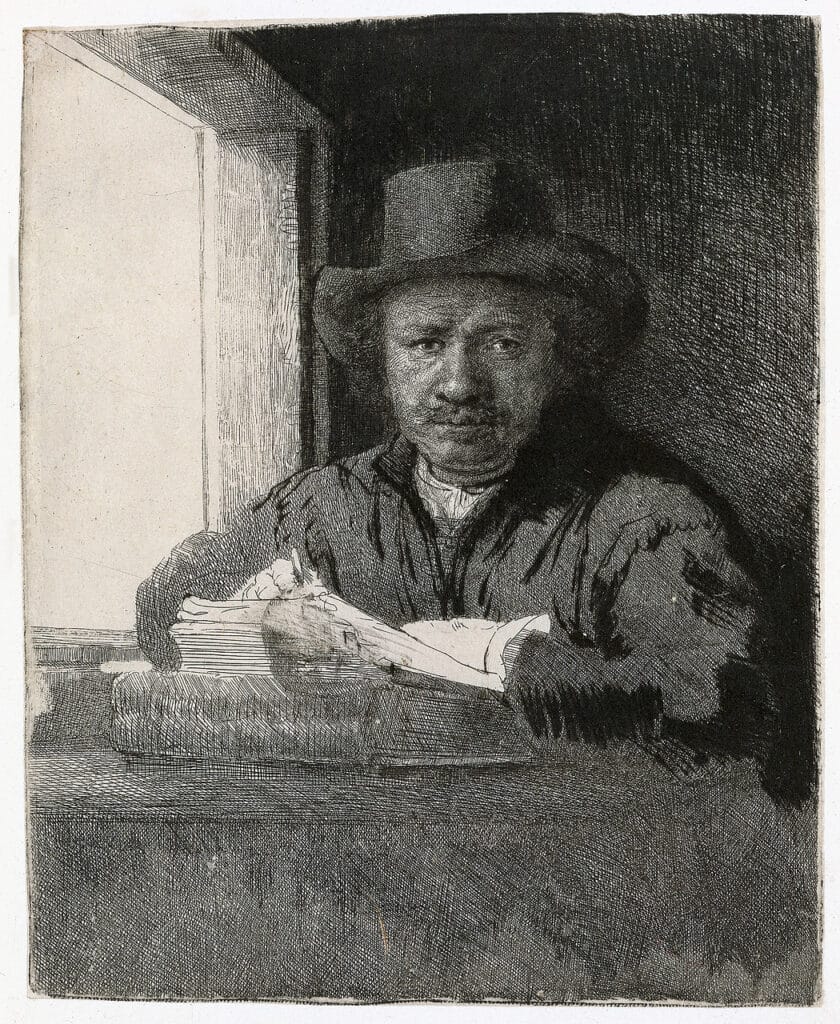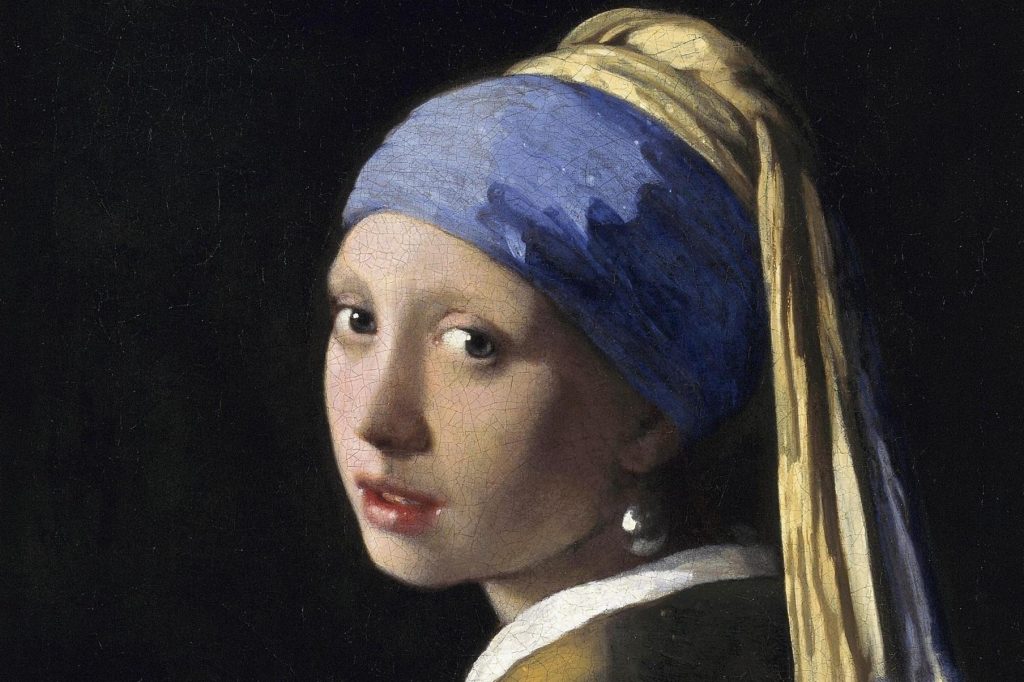Baroque art originated in Rome and was part of the overall Baroque movement that came out of the Renaissance art and architecture style of 17th century Italy.
Baroque art is often seen as grandiose, dramatic and flamboyant. It was a style that emerged during a period of great political and social upheaval, in response to the Protestant Reformation. The Baroque era was marked by a spirit of Counter-Reformation, a reaction to the Protestant Reformation that sought to reassert the authority of Rome and the Catholic Church, and bring back some of the grandeur that had been lost with Medieval art.
In this guide, we will explore the history of Baroque art, its main characteristics, as well as some famous artworks from this era.
What is Baroque?

The Baroque art movement was a period of time in the 17th century that saw a resurgence of classical art and architecture. Baroque describes painting, sculpture, music, architecture and philosophy, that had shared characteristics. These characteristics are nuanced and complex, but overall, Baroque pieces were created to appeal to the sense with intricate details that elicit strong emotional reactions from the viewer with dramatic lighting and powerful themes that relate to Catholic values.
Baroque art developed in the Roman school of painting and sculpture and was strongly influenced by Caravaggio, who used a light-and-shade technique to create dramatic effects. This style became popular throughout Italy, France and Spain and spread through Europe during the 17th century.
Baroque art had clear religious influences, especially as it was often funded or commissioned by the Catholic Church. The Baroque movement is also recognised for its theatricality, as it often featured complex visual stories that were designed to evoke awe and emotion from viewers.
When was the Baroque period?
The Baroque period reached its heights in the decades between 1630 and 1680. However the movement continued to flourish throughout Europe until the 18th century. By the 18th century, the influences of the Baroque movement had spread as far as colonial South America. The movement was replaced by Rococo which took place in the 18th century and had more light-hearted take on art.
Baroque art characteristics

Baroque art is characterised by an exaggerated or theatrical style of expression which often includes ornate details, dramatic lighting and intense emotion. This paired with the realistic style, aimed to give viewer’s an immersive experience.
The Baroque period saw a focus on the individual and on movement, with paintings focusing not just on the subject but also their environment. Baroque paintings often featured dynamic compositions, with figures or objects that break the frame of the painting.
Another prominent feature of Baroque art is its use of vivid colour and texture to create a feeling of depth. This was often done by using the chiaroscuro technique, which involves contrasting dark and light tones.
Baroque art history

The movement began in Italy as a reaction against the rationalism of the Renaissance and spread throughout Europe in the 17th century. It was at its height during the Counter Reformation, when it was used to promote religious ideals and political agendas of the Catholic church. Notable Baroque artists include Caravaggio, Bernini, Rubens and Rembrandt. The Baroque period also saw the development of opera and the rise of Rococo art.
Baroque is a French word meaning irregularly-shaped, which first came from the Portuguese word, ‘Barocco’, originally describing misshapen pearls. The word possibly also comes from the Aristotelian logic term ‘baroco’ which came into the French lexicon of the 16th century to describe concepts that were complex and excessive. This relates to the characteristics of the ornate, rich, flamboyant and extravagant art of that time.
Baroque took over from plain Mannerism of the 16th century, taking the mainstream of Renaissance, after the High Renaissance period. Baroque was much favoured by the Catholic Church because it was more direct and less ambiguous than previously established Mannerism.

The Italian Catholic Church wanted religious art and cared for Baroque art, but was unable to buy when it lost its power and wealth due to the economic downturn caused by the plague. So at the beginning of the 18th century, Italy’s Baroque art was surpassed by France’s Rococo art then subsequently by other styles of visual art as France rose to power, dominating Europe. Baroque art continues to be popular and the style is still used today when lavishly decorating interiors.
Baroque artists
Caravaggio (1571-1610)

Michelangelo Merisi da Caravaggio was an Italian painter who worked during the Baroque period, who is considered one of the most important painters in art history. One of his most famous works was The Taking of Christ (1602) that is in the National Gallery of Ireland.

The oil painting shows the moment when Jesus was betrayed by a kiss of identification from Judas to three Roman soldiers; John is on the far left of the picture, seen fleeing. The background is purposefully dark which emphasises the foreground figures and the lantern held overhead gives some light to the otherwise dark setting. The seven figures are shown in hyper realistic detail, immersing the viewer in the highly contrasted scene.
He painted religious works as well as everyday life, often using dramatic lighting and intense emotion to make the painting appear realistic. Caravaggio was known for his use of tenebrism, a dramatic form of light and shade, which highlights certain elements in a painting. He also used chiaroscuro to create atmosphere and contrast figures against one other. His works include The Calling of Saint Matthew (1599), The Entombment of Christ (1607-1610), The Conversion of Saint Paul on the Way to Damascus, David and Goliath, Judith Beheading Holofernes, Narcissus, Bacchus and Medusa.
Caravaggio’s life away from art was violent and after a street fight he faced the death sentence for murder and so fled to Naples. He spent the last four years of his life in Sicily, Malta and Naples and died in unknown circumstances.
Rembrandt (1606-1669)

Dutch painter Rembrandt had two styles: Baroque and Dutch Golden Age. He was a master of light and depth, making figures he drew stand out from the shroud of darkness he had enveloped them in. Rembrandt is considered to be one of the best artists of all time, but was not only an artist, he was an art collector, art dealer, art teacher, draughtsman and etcher. He had rich parents and benefited from a good education.

Unusually, Rembrandt painted eighty self-portraits (about a tenth of his total work) including many famous drawings as he wanted to explore human emotions, moods and changes during the aging process. His paintings today still stand as an accurate record of the changes and effects of time and life on the human body. His objective use of realism continues to fascinate the world and the quality and detail of his work keeps his subject matter alive in every picture.
Rembrandt suffered personal tragedy in his life, including his wife, Saskia dying at 29, going bankrupt through overspending and later his son, Titus dying at 27, a year before his own death. His cause of death is unknown and he died at the age of 63 and because he was poor he was given a basic funeral. He was buried in an unknown grave by the church even though he was an atheist.
Vermeer (1632–1675)
Johannes Vermeer was a relatively successful Dutch Baroque period painter who specialised in domestic scenes. He didn’t produce many paintings, about 60 in total of which only 36 survived and almost all his paintings were set in two rooms of his house in Delft, Dutch Republic. This can be detected as the same furniture is in the background in the paintings.

His most famous painting is ‘The Girl with the Pearl Earring’. This is also one of the most famous paintings in art history. The painting shows a sixteen year old girl whose name is Greit on a black background looking out of the painting, back at the viewer. She is wearing a blue headband, a mustard yellow jacket and has a large, pear-shaped pearl earring in her left ear. Greit was most likely to have been Vermeer’s oldest daughter, but other unfounded opinions put her as the family maid’s assistant, as in the film played by Scarlett Johansson.

Towards the end of his life there was a significant downturn in the Dutch Republic due to a French invasion and records show that Vermeer was listed as a member of the Civic Guards. As an indirect result of the downturn in 1674 (a year before he died), unable to sell any of his own or acquired art from other masters he was dealing with, he was forced to borrow a thousand guilders from his mother-in-law. The last two days of his life he was said to have gone into a frenzy and went from being healthy to being dead. His wife Catharina Bolnes said it was probably due to the pressure of financial ruin. He died at the age of 43.
Peter Paul Rubens (1577–1640)

Rubens was a Flemish Baroque artist and painted a mixture of subjects including; landscapes, mythical and religious scenes and historical portraits of royalty. In 1630, four years after the death of his first wife Isabella, he married his wife’s niece, the 16-year-old Hélène Fourment. Hélène inspired the voluptuous figures in many of his paintings, including The Feast of Venus, The Three Graces and The Judgement of Paris. Rubens was famous in his own lifetime, but not only for his art but as a trusted advisor who negotiated with nobility and diplomats. He was knighted by Charles I. He visited the royal monastery of the Escorial, near Madrid with Spanish Baroque artist, Velazquez to see the famous paintings there. This was said to have inspired Velazquez who painted Las meninas (the ladies in waiting) to visit Italy.
Gian Lorenzo Bernini (1598–1680)

Bernini was an Italian Baroque sculptor and architect who worked mainly in the city of Rome. He created works of art that embodied movement and emotion, including the Fountain of Four Rivers in Rome and The Ecstasy of Saint Teresa at Santa Maria della Vittoria. He also designed several churches, including the colonnade of St Peter’s Square and the Church of Sant’andrea al Quirinale. Bernini conceived a bold design for Saint Peter’s in Rome that revolutionised church architecture; it was said to have embraced the audience with its grandeur. His last major work was The Ecstasy of Saint Teresa at Santa Maria della Vittoria, which is widely heralded as the greatest sculpture of its time. Bernini died at the age of 82 and was buried in Rome’s Pantheon.
His funeral was attended by the pope, cardinals and many other important figures. Even after his death, his influence on Baroque art lives on and is still being felt in modern sculpture today.
Diego Velázquez (1599–1660)
Velázquez was a Spanish Baroque artist who was court painter to King Philip IV of Spain, but specialised in painting portraits and scenes from everyday life that are considered masterpieces today. His most famous works include Las Meninas, The Maids of Honor and The Spinners.

The Adoration of the Kings, a religious painting depicting the Three Kings visiting the newborn Jesus, is one of his most significant works. Velázquez also painted a number of mythological and historical scenes and was influential in introducing naturalism into Spanish painting.

The Spinners is another famous work by Velázquez that depicts the Roman mythological scene of Arachne. This painting shows how naturalistic and realistic Velázquez’s paintings were. The realism, tenebrism and dramatic lighting of his portraits are emblematic of the drama of Baroque art, which mirrored Caravaggio’s style.
Velázquez died shortly after completing Las Meninas, at age 61, having completed around 134 paintings over the course of his lifetime. He is regarded as one of the most influential Spanish portrait artists from the Baroque and Spanish Golden Age; the realism and dramatic lighting of his portraits are emblematic of the times.
Frans Hals (1582–1666)

A Dutch Golden Age painter, Frans Hals was best known for his loose, expressive brushwork. Some of his most famous works include The Laughing Cavalier and The Banquet of the Officers of the St George Militia Company.

Hals was a master of portraiture and painted many wealthy merchants and civic guards. His portraits captured the spirit and mood of his sitters, conveying their excitement and joy through his vigorous brushwork. He also mastered genre painting, which portrayed everyday scenes of ordinary people in Dutch society such as The Merry Drinker, The Smoker.
Hals’ influence on Baroque art was profound; his use of light and colour were revolutionary for the time. His loose painting style differed from the controlled realism that so many other artists of the time exhibited.
Annibale Carracci (1560–1609)

Carracci was an Italian painter, draughtsman and printmaker of the Baroque period. He established an academy in Rome where he taught many other influential artists such as Guido Reni and Domenichino. Carracci’s work is known for its expression of emotion, which is reflective of the Mannerist style.
He was particularly adept at portraying religious scenes, often incorporating landscape elements into his works to add a sense of grandeur and drama. Carracci also painted mythological and historical subjects; his most renowned work is The Loves of the Gods, a set of frescoes in the Farnese Gallery.

Carracci was also a pioneer in printmaking, producing etchings and engravings throughout his life. His prints were popular and widely distributed, making him one of the first artists to achieve success through printmaking rather than painting or sculpture.
Carracci’s influence on the Baroque style was significant and his works are still considered masterpieces of the genre to this day. His dynamic compositions, inventive colour palette and ability to capture emotion in his artworks made him one of the most influential artists of the period.
Art techniques from the Baroque period
Caravaggio extensively used the chiaroscuro and tenebrism oil painting techniques in his work. Chiaroscuro is the use of light and dark in a painting to give depth and contrast. Tenebrism is a technique that employs an extreme contrast between light and dark, usually with very little middle value in order to create a sense of drama. Both techniques are used to create emotional intensity in Baroque paintings.
The lasting influence of Baroque art
The Baroque movement is often credited with introducing new techniques and elements that changed the course of art history. These include modern perspective, drama, texture, movement and emotion. Baroque art also had an impact on music composition and theatre through its promotion of opera. In addition, it was extremely influential in the development of Rococo painting and sculpture.


